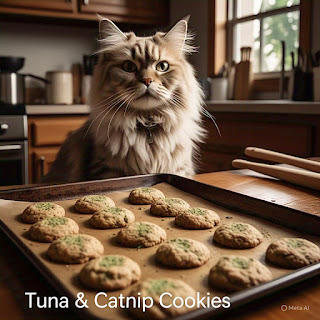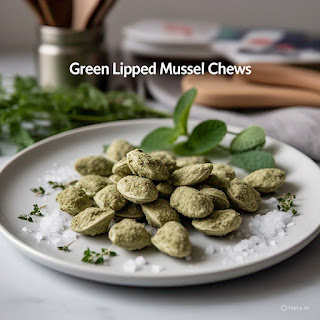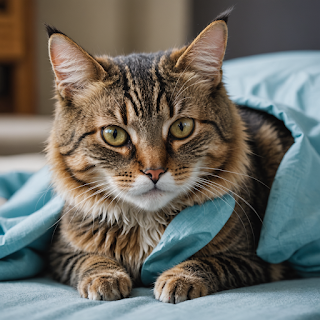Introduction
Store-bought cat treats often contain fillers, preservatives, and mystery ingredients. Why not pamper your feline friend with wholesome, vet-approved snacks you can make at home? This guide features 20 simple, budget-friendly recipes—from savory tuna bites to catnip-infused delights—that will have your kitty purring for more. Plus, homemade treats let you control exactly what goes into their diet!
Why Make Homemade Cat Treats?
Avoid Harmful Additives: No artificial colors, flavors, or excessive salt.
Tailor to Dietary Needs: Perfect for cats with allergies or sensitive stomachs.
Cost-Effective: Most recipes cost under $5 to make.
Bonding Activity: Involve kids in baking safe, fun treats!
Safety Tips:
Avoid toxic ingredients like garlic, onions, chocolate, and xylitol.
Consult your vet before introducing new foods, especially for cats with health conditions.
1–5: Protein-Packed Treats
1. Chicken & Pumpkin Bites
Ingredients:
1 cup cooked chicken (shredded)
¼ cup pure pumpkin puree (no spices)
1 egg
Instructions:
Blend all ingredients in a food processor.
Roll into pea-sized balls and bake at 350°F for 10–12 minutes.
Storage: Refrigerate for up to 1 week.
Why Cats Love It: Pumpkin aids digestion, while chicken provides lean protein.
2. Salmon & Oat Crunchies
Ingredients:
1 can salmon (drained, no salt added)
½ cup oat flour
1 tsp catnip (optional)
Instructions:
Mix ingredients into a dough.
Roll flat, cut into tiny squares, and bake at 325°F for 15 minutes.
Pro Tip: Use silicone paw-print molds for cute shapes!
3. Tuna & Catnip Cookies
Ingredients:
1 can tuna in water (drained)
1 cup whole wheat flour
1 tbsp dried catnip
Instructions:
Combine ingredients into a stiff dough.
Roll into ¼-inch thick sheets, cut into small circles, and bake at 300°F for 20 minutes.
4. Turkey & Cranberry Balls
Ingredients:
½ cup ground turkey (cooked)
2 tbsp dried cranberries (chopped finely)
1 tbsp coconut oil
Instructions:
Mix ingredients and form into tiny balls.
Freeze for 2 hours before serving (great for teething kittens!).
Note: Cranberries support urinary health.
5. Beef Liver Jerky
Ingredients:
½ lb beef liver (sliced thin)
Instructions:
Dehydrate in a food dehydrator at 165°F for 6–8 hours.
Store in an airtight container for up to 2 weeks.
Why It’s Great: Rich in iron and vitamin A.
6–10: Fishy Favorites
6. Sardine & Spinach Bites
Ingredients:
1 can sardines in water
½ cup spinach (steamed and chopped)
¼ cup chickpea flour
Instructions:
Mash sardines and mix with other ingredients.
Form into mini muffins and bake at 350°F for 12 minutes.
7. Mackerel & Sweet Potato Strips
Ingredients:
1 cup cooked mackerel (flaked)
½ cup mashed sweet potato
1 egg
Instructions:
Blend ingredients, spread onto a baking sheet, and bake at 325°F for 25 minutes.
Cut into strips once cooled.
8. Shrimp & Catnip Crisps
Ingredients:
½ cup cooked shrimp (chopped)
¼ cup rice flour
1 tsp catnip
Instructions:
Combine into a dough, roll thin, and bake at 300°F for 20 minutes.
Break into small pieces after cooling.
9. Whitefish & Zucchini Bites
Ingredients:
1 cup whitefish (cooked, deboned)
½ cup grated zucchini
2 tbsp tapioca flour
Instructions:
Mix and form into small balls.
Steam for 8–10 minutes.
10. Anchovy & Parsley Cookies
Ingredients:
3–4 anchovy fillets (in water, drained)
1 cup oat flour
1 tsp dried parsley
Instructions:
Blend anchovies into a paste, then mix with other ingredients.
Bake at 325°F for 15 minutes.
Bonus: Parsley freshens breath!
11–15: Grain-Free & Hypoallergenic
11. Chicken & Egg Puree Drops
Ingredients:
½ cup boiled chicken
1 hard-boiled egg
1 tbsp water
Instructions:
Puree in a blender until smooth.
Drop ½ tsp portions onto parchment paper and freeze.
Ideal For: Kittens or senior cats with dental issues.
12. Duck & Pumpkin Jerky
Ingredients:
½ lb duck breast (thinly sliced)
1 tbsp pumpkin puree
Instructions:
Brush duck slices with pumpkin.
Dehydrate at 160°F for 8 hours.
13. Rabbit & Blueberry Bites
Ingredients:
½ cup ground rabbit (cooked)
2 tbsp blueberries (mashed)
1 tbsp flaxseed
Instructions:
Mix and form into tiny balls.
Refrigerate for 1 hour before serving.
14. Venison & Carrot Chews
Ingredients:
½ cup ground venison
¼ cup grated carrot
1 egg
Instructions:
Combine, shape into logs, and bake at 350°F for 18 minutes.
Great For: Cats with poultry allergies.
15. Quail Egg Snacks
Ingredients:
4–5 quail eggs (hard-boiled)
Instructions:
Slice into quarters and serve as a protein-rich treat.
16–20: Fun & Functional Treats
16. Catnip & Oat Cookies
Ingredients:
1 cup oat flour
1 tsp catnip
¼ cup water
Instructions:
Mix into a dough, cut shapes, and bake at 300°F for 15 minutes.
17. Bone Broth Ice Cubes
Ingredients:
2 cups unsalted bone broth (chicken or beef)
Instructions:
Pour into ice cube trays and freeze.
Offer as a hydrating summer treat!
18. Goat’s Milk & Honey Drops
Ingredients:
½ cup goat’s milk
1 tsp raw honey
Instructions:
Warm milk and honey (do not boil).
Pour into silicone molds and freeze.
Note: Honey should be used sparingly (1/4 tsp per treat).
19. Coconut Oil & Turmeric Bites
Ingredients:
2 tbsp coconut oil
¼ tsp turmeric
Instructions:
Mix and pour into tiny molds. Freeze until solid.
Benefits: Anti-inflammatory and supports coat health.
20. Green Lipped Mussel Chews
Ingredients:
¼ cup green-lipped mussel powder
½ cup mashed potato
Instructions:
Combine, shape into small chews, and bake at 325°F for 10 minutes.
Why It’s Great: Supports joint health.
FAQs About Homemade Cat Treats
"How many treats can I give my cat daily?"
Treats should make up ≤10% of their daily calories.
"Can I substitute almond flour for wheat flour?"
Yes, but avoid almond flour if your cat has nut allergies.
"How long do homemade treats last?"
Up to 1 week in the fridge or 2–3 months in the freezer.
Conclusion
With these 20 easy recipes, you can spoil your cat guilt-free while boosting their health. Share your creations on social media (tag us @ThatCatThing!), and don’t forget to check below for cat care tips and essentials!
Need a Professional Cat Care? Check out this page.
























